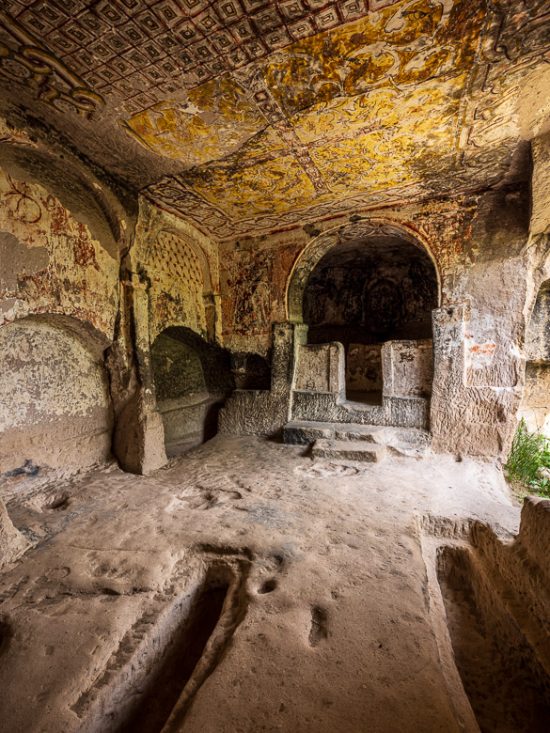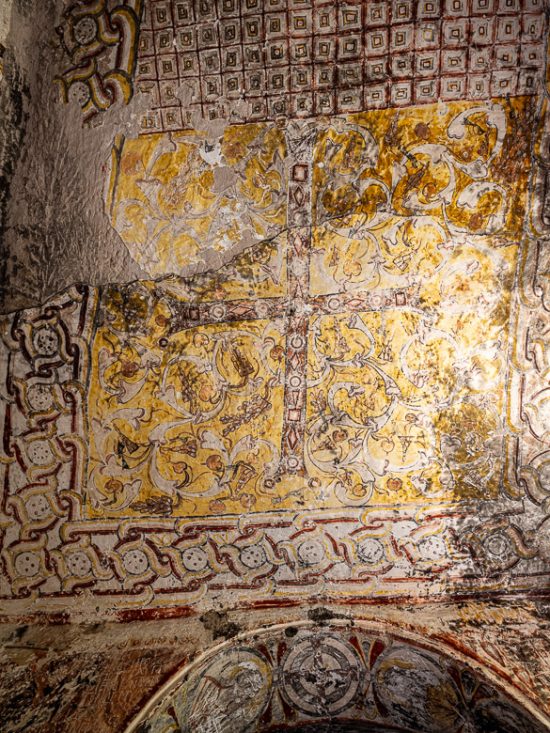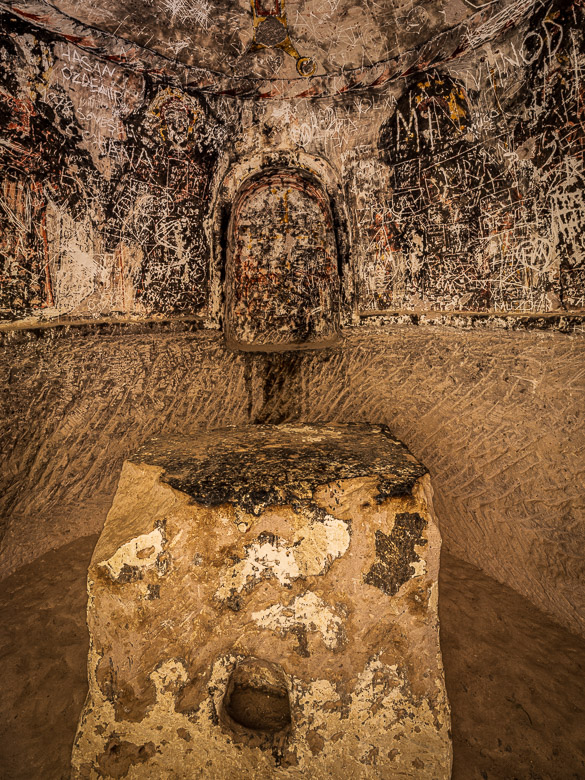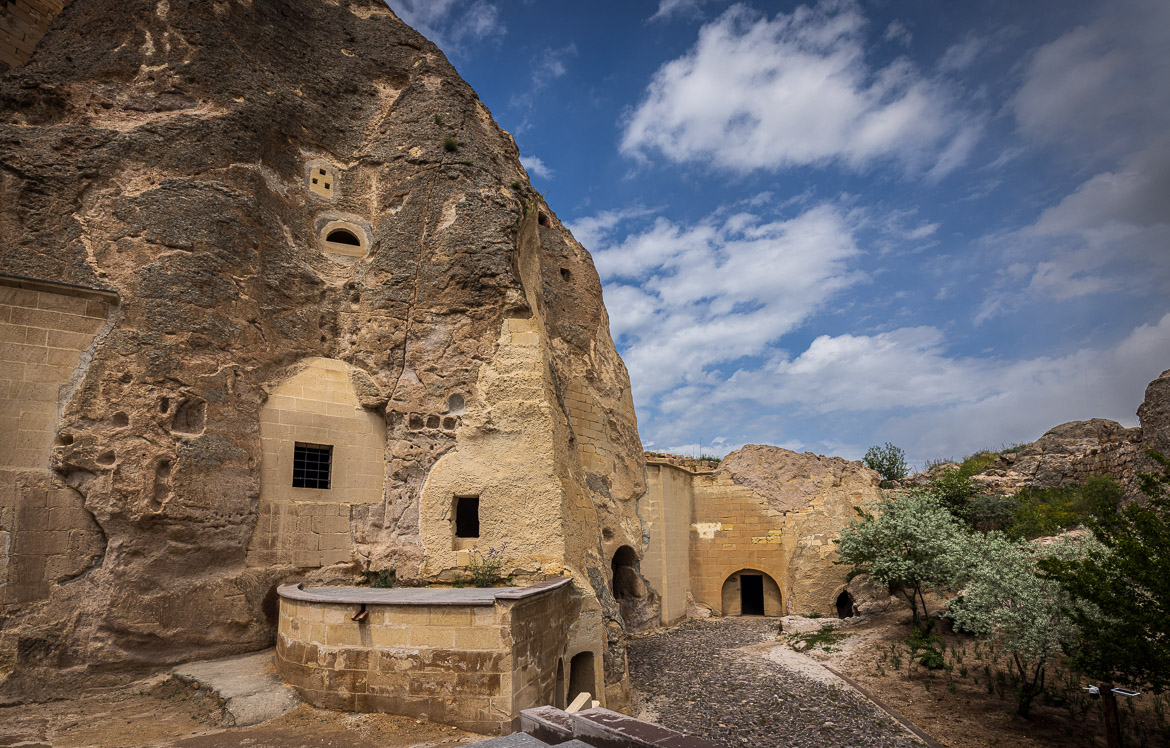
Keşlik Monastery is situated south of the main arteries in Cappadocia and is something of a hidden gem. It is a cave monastery complex, a large refectory hall, meeting rooms and rooms for the monks and priests to stay as well as some small chapels. It is believed that the first cave rooms for the monks were established already in the third century AD and in pre Roman times the place was used for burials.
There is a large number of rooms (interconnected caves) for harbouring the monks. The settlement was clearly at one time serving a defence purpose, because at least one large room could be closed off by a large stone door (see my photo further on) hiding and protecting the people inside.
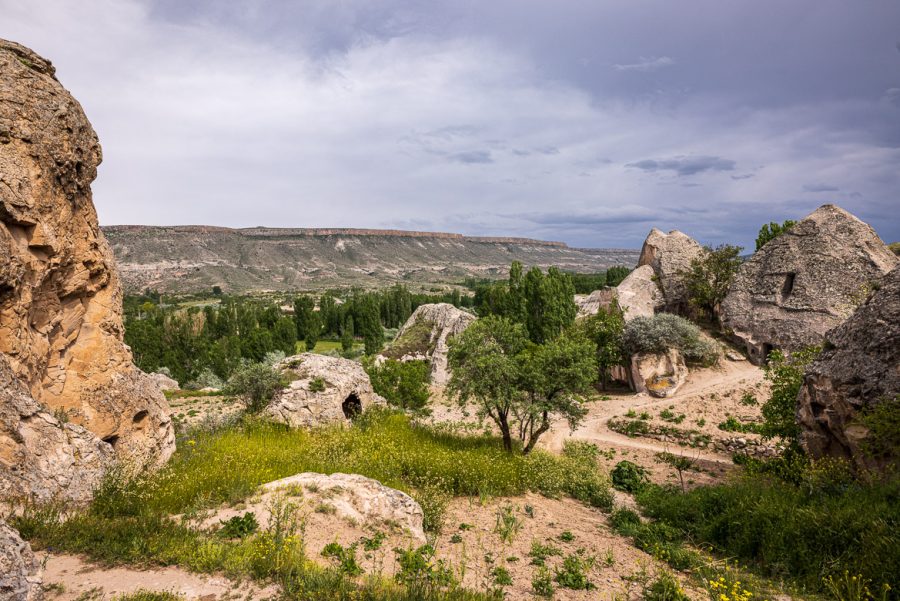
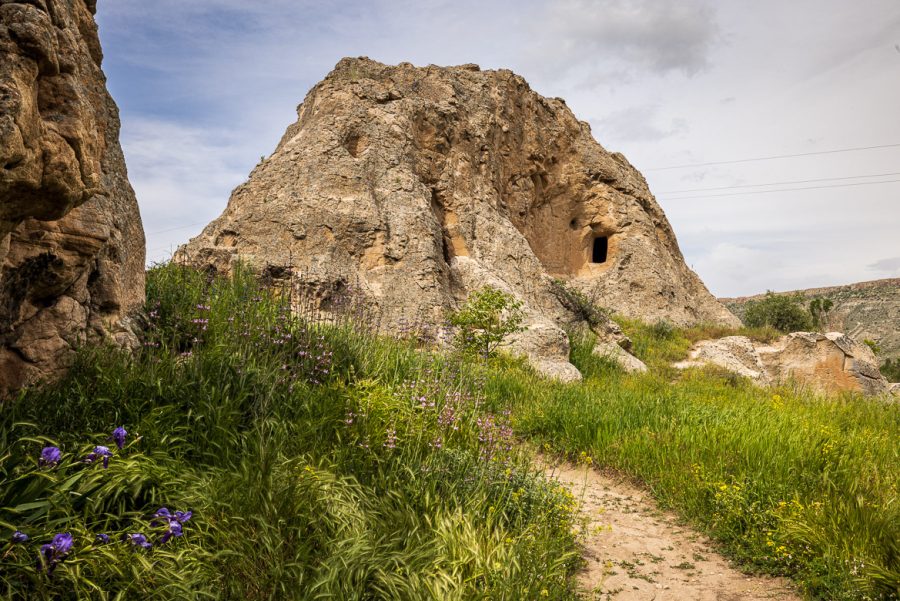
The interior of the Archangelos Church is quite dark and the frescoes are covered with a thick layer of soot that made them difficult to discern and even more difficult to photograph. It is connected to a large refectory, where a natural underground spring still produces fresh water.
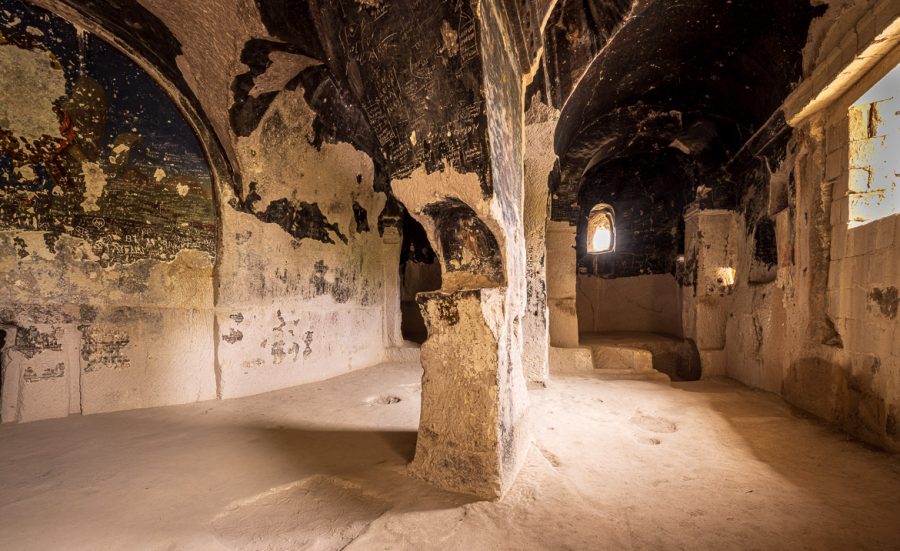
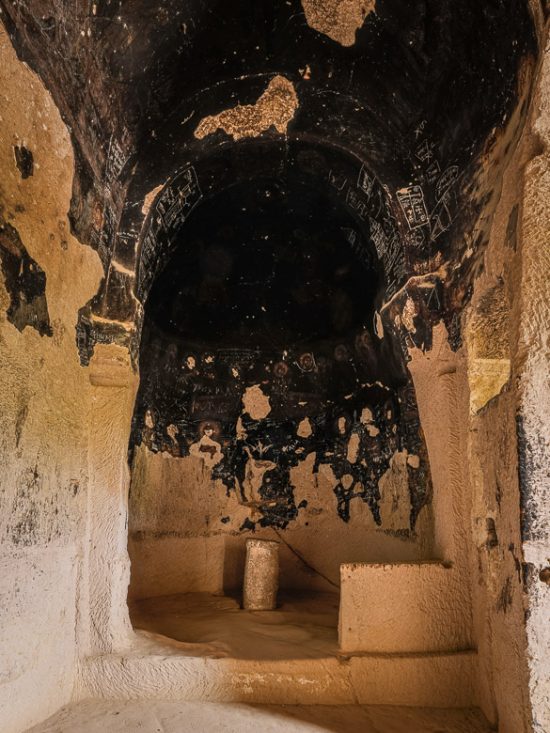
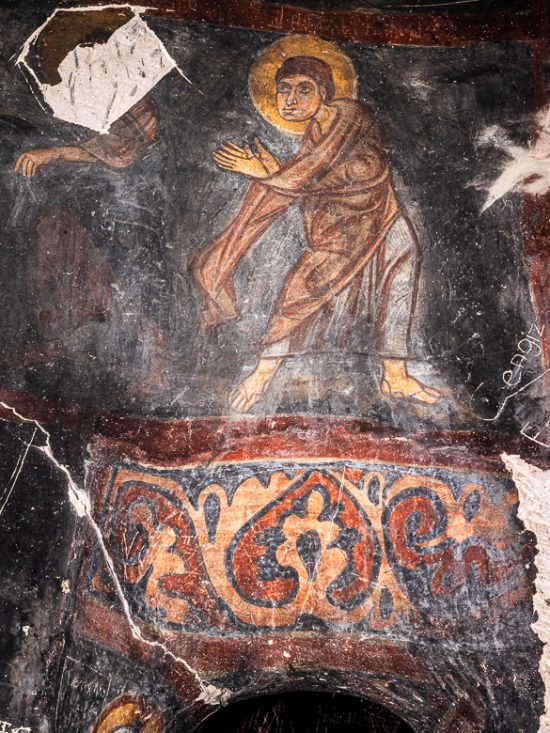
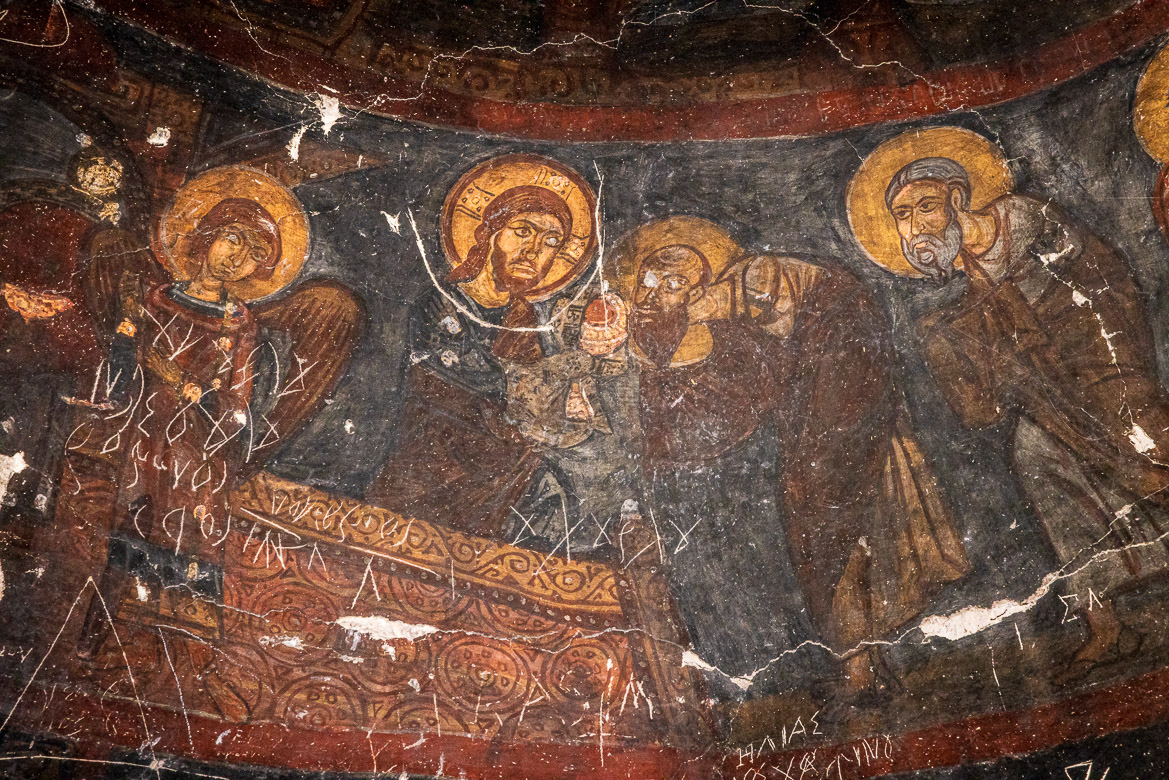
Walking further in into the cave complex in the same rock as the images above, I had to crawl in the narrow tunnels connecting the rooms. With a camera backpack that scraped on the ceiling of the tunnel and with Jennifer helping me carrying the flash lights we succeeded to enter the inner rooms. The most interesting part was the stone wheel that could be moved from its position and rolled slightly down to close off the tunnel entrance completely. That was obviously an important defence mechanism for the monks in case of invaders (Arabs and Mongols).
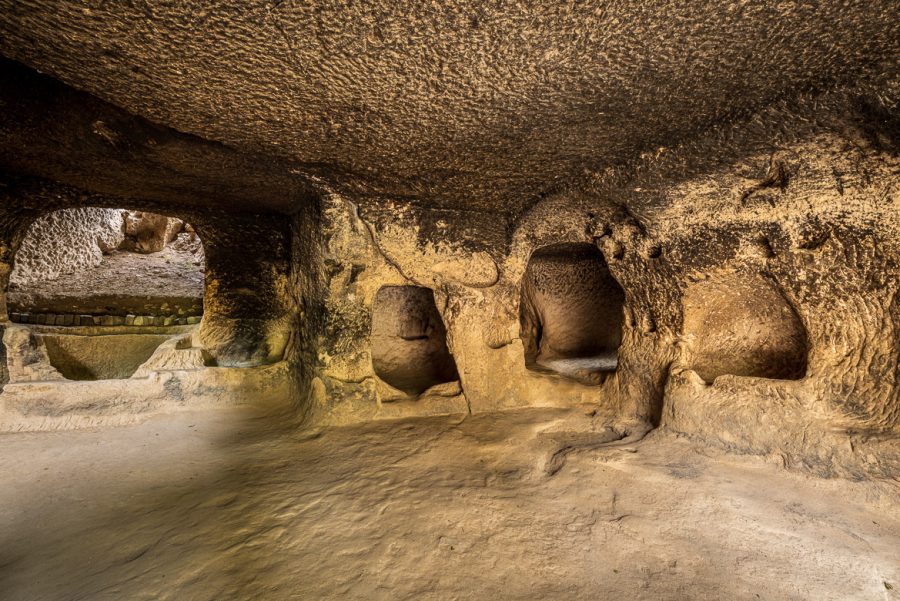
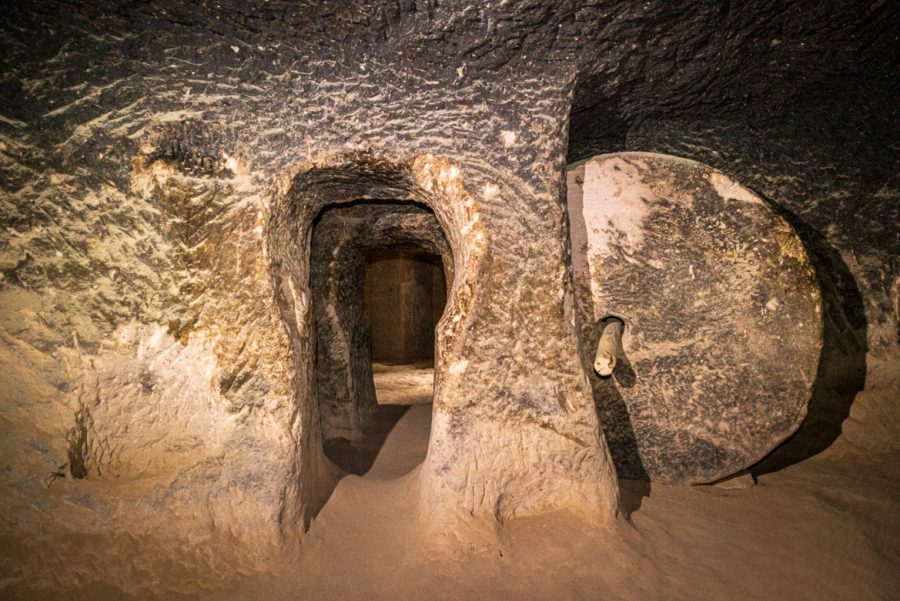
In a separate rock structure was a second church belonging to the Monastery, the Church of Stefanos. This was a grave chapel as can be seen by the graves in the floor that now are open for us to see. Painted on the ceiling in front of the Altar is a cross with a floral motive surrounding it. The cross, known as St Euphemia Cross, was an important symbol of the Iconoclastic era. During this period, from 726 – 843, paintings of people was forbidden (like in the Moslem religion nowadays) by the Emperor. The ceiling was probably painted during this time period. Grapevines flow from t he base of the Cross and fill the yellow background. The vineyard represents Christ’s followers who have become God’s people through the cross ( Psalm 80 and John 15).
